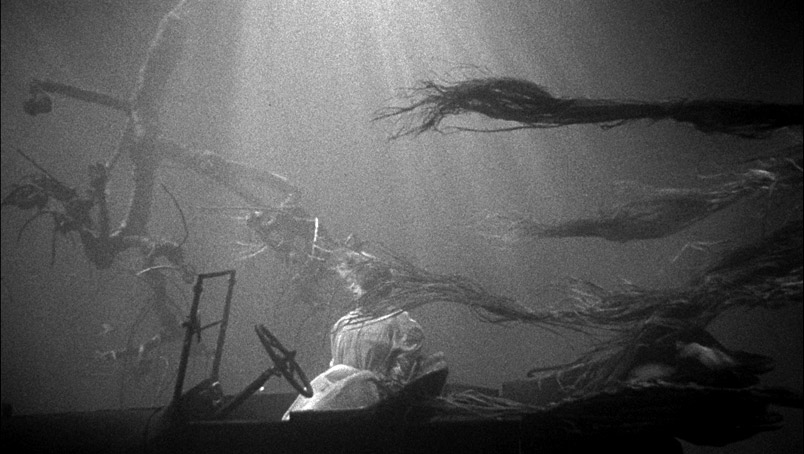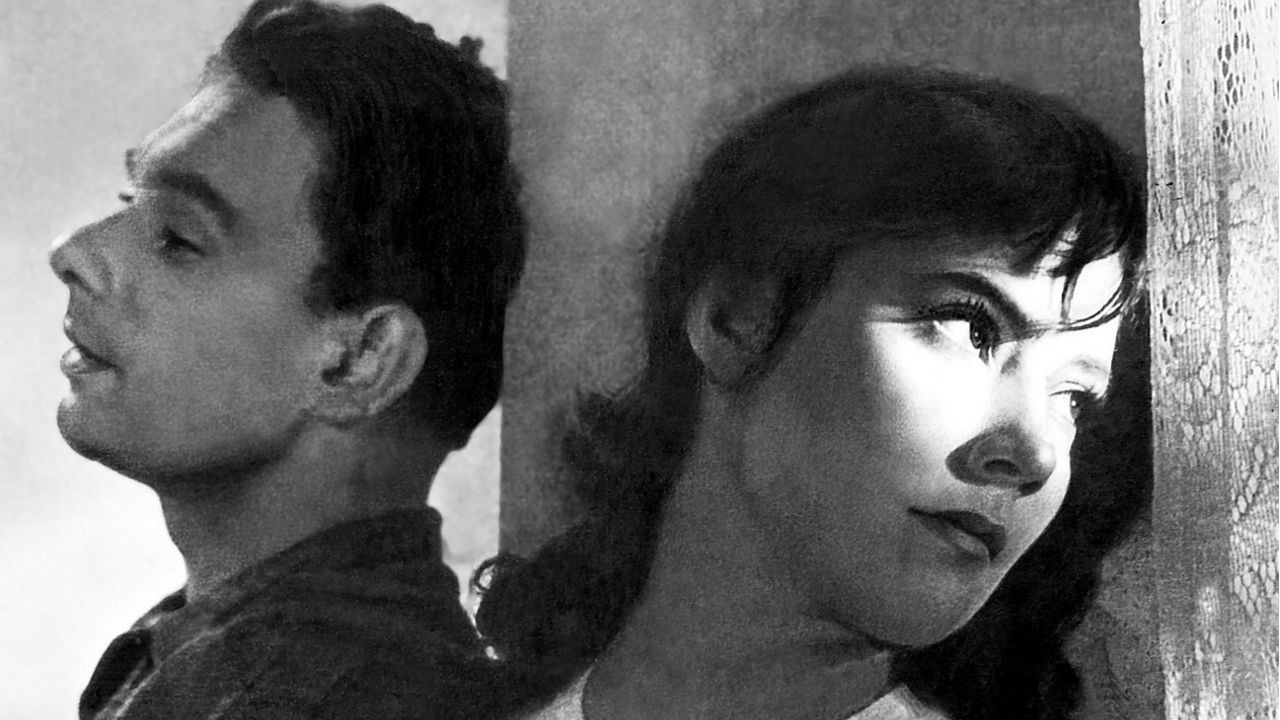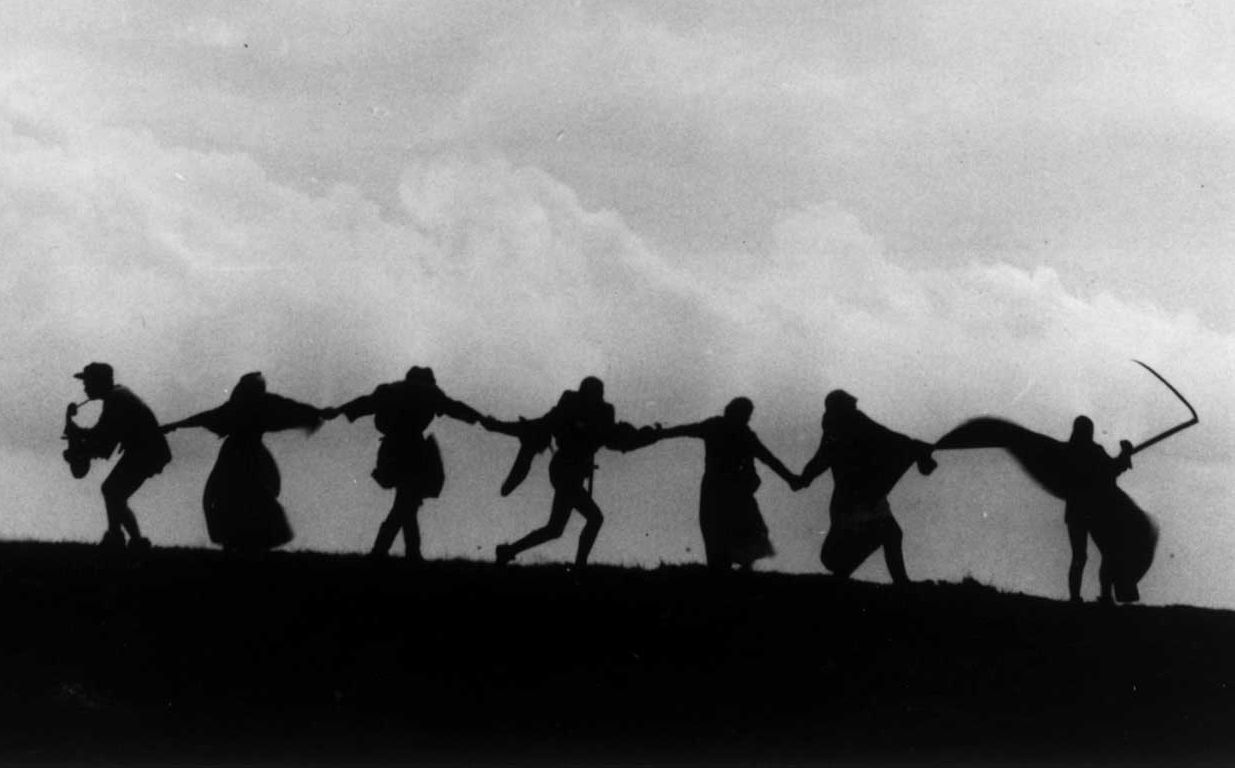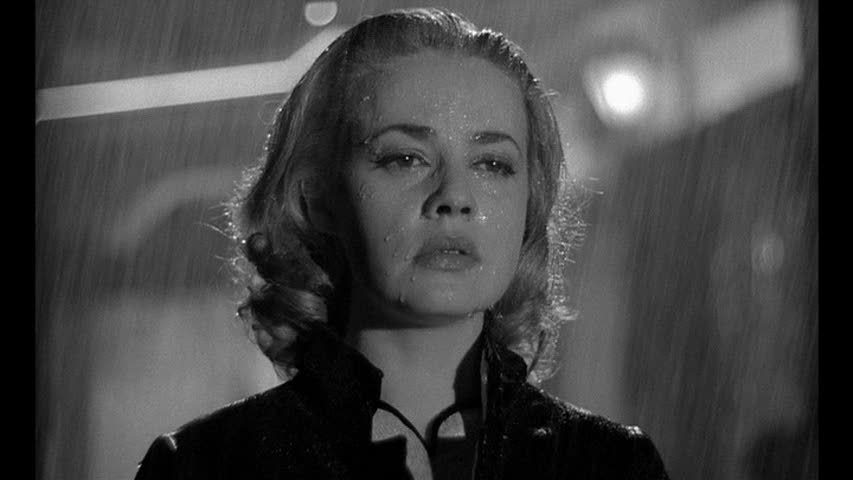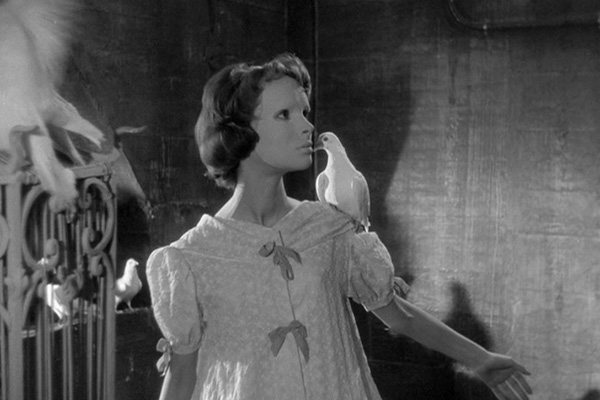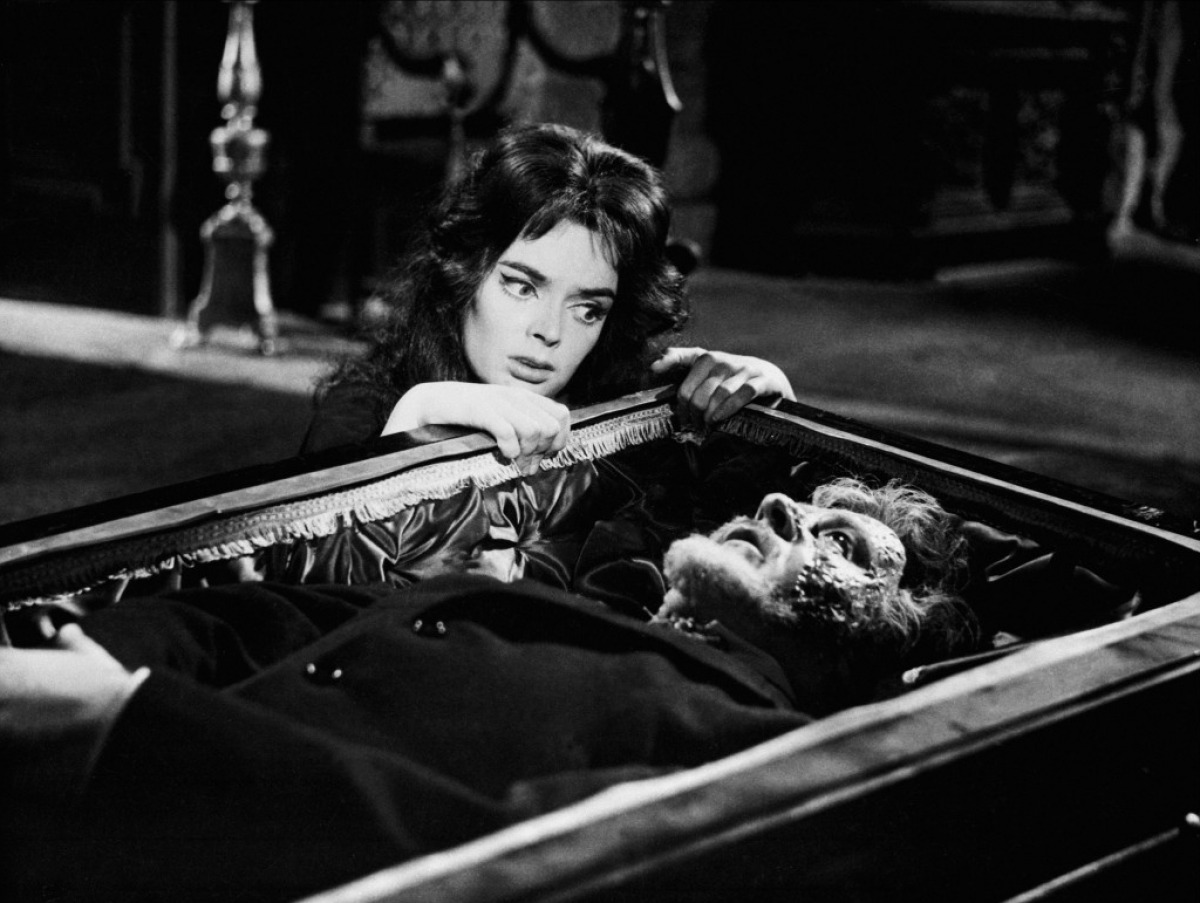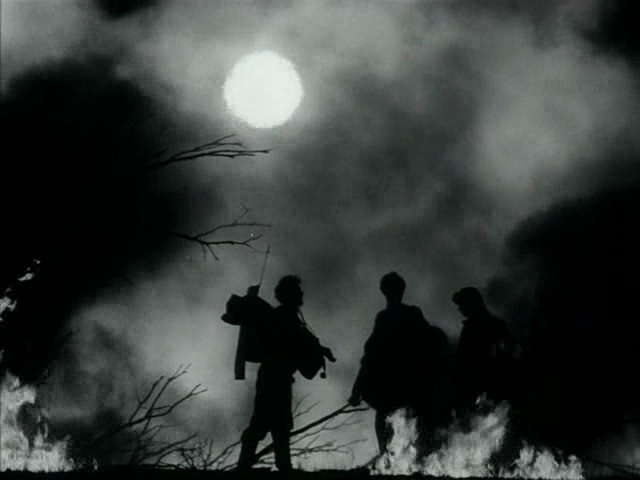7. The Night of the Hunter (1955)
D: Charles Laughton/C: Stanley Cortez
Harry Powell, a phony priest of imposing deception seeks out the family of a former inmate who left behind a large sum of money. Powell seduces the mother into his false prophet act but has greater difficulty in convincing the children of his sinister intentions.
The expressionistic sets must be seen to be believed. Whether it’s the interior of Willa’s bedroom or the exteriors of a silhouetted barn against a moonlit sky, the sinister mood of Night of the Hunter permeates across the whole film. But there are also scenes that counter the evil imposed by Powell.
For example, the scene where the children float across the river with various wild life in the foreground is a gorgeous montage of innocence where the children find safety and security amongst the purity of the natural world.
8. The Cranes Are Flying (1957)
D: Mikhail Kalatozov/C: Sergey Urusevskiy
A woman tries to adjust to life without her boyfriend who enlists to fight in WWII. The Cranes are Flying is a war film depicting the lives left behind the soldiers who go off to war.
A bold film in direction and cinematography, The Cranes Are Flying is filled with handheld camerawork, visceral compositions, and an emotionally charged performance by Tatyana Samoylova. The film is a revelation in terms of the limitless possibilities of how direction and cinematography have the ability to transcend the very nature of film by sheer subjective power. Watching The Cranes Are Flying is like watching movies for the first time.
9. The Seventh Seal (1957)
D: Ingmar Bergman/C: Gunnar Fischer
A 14th knight plays a game of chess with Death as he travels across a countryside that has been subjected to both the plague and The Crusades.
With a title taken from the Book of Revelation, it comes as no surprise that the theme running through The Seventh Seal is bleak. Existential in nature, The Seventh Seal is infused with an unwavering anxiety surrounding what it means to live and die in a seemingly purposeless existence void of God.
This is accomplished by the symbolic game of chess played between the knight and the personification of Death who Bergman created as a combination of a skull and clown. The setting is especially relevant to this existential anxiety as deaths are abundant from the plague and Crusades that have invaded 14th century Europe.
10. Elevator to the Gallows (1958)
D: Louis Malle/C: Henri Decae
Florence and her lover, Tavernier, plot to kill the woman’s husband who also happens to be Tavernier’s superior at work. Tension builds when Tavernier realizes he left incriminating evidence at the staged suicide. As he is leaving the crime scene which is now void of any evidence, Tavernier ends up trapped in an elevator.
Another example of how setting plays such an important character in the movies on this list, Elevator to the Gallows utilizes the streets of Paris in the evening to satisfy its lonesome ends. The incredibly sad, sparse trumpet of Miles Davis only adds to images of Florence as she wanders the streets, longing to be reunited with Tavernier.
11. Eyes Without A Face (1960)
D: Georges Franju/C: Eugen Shuftan
A surgeon kidnaps women in hopes of successfully transplanting one of their faces on his daughter, Christiane, whose face was dismembered in an accident.
Those sad eyes of Christiane behind the white mask have inspired many movies (i.e., The Face of Another, Open Your Eyes) which also delve into themes of identity and alienation. Eyes Without a Face is a story of one girl’s despair and her isolation from a world she so desperately wants to inhabit.
Christiane’s despair is especially rooted in her estrangement from her fiancé who she is too ashamed to see. The face transplant surgery is especially horrifying, while Christiane’s releasing both the dogs and doves is one of the most glorious scenes in all of Franju’s films.
12. Black Sunday (1960)
D: Mario Bava/C: Mario Bava
The corpse of a 17th century witch becomes resurrected and seeks retribution and immortality two hundred years following her execution.
Bava, who began his career in movies as a cinematographer, showcases his mastery of composition with the gothic design and chiaroscuro lighting throughout ‘Black Sunday.’ The extraordinary nocturnal sets, such as the opening scene where Asa is ritualistically killed by hooded men holding torches in a landscape of bare trees and fog, offers a grotesque beauty that is rarely witnessed in horror films.
The black and white cinematography perfectly serves the gothic atmosphere of the various architectural setting in Black Sunday such as the monastery ruins and the castle which both look especially haunting under a moon soaked eve.
13. Letter Never Sent (1960)
D: Mikhail Kalatozov/C: Sergey Urusevskiy
Four geologists seek diamonds in the Siberian Wildnerness in hopes of saving their country from socioeconomic collapse. Although the premise of the film is simplistic, the director/cinematographer team of Kalatozov and Urusevskiy create a visual language filled with terrifying and beautiful images that linger long after the film has ended..
Letter Never Sent is the second film on the list from director Mikhail Kalatozov and cinematographer, Sergey Urusevskiy (in addition to The Cranes Are Flying). With a simplistic plot, Letter Never Sent is filled with rich imagery of the natural world as all four elements are represented in unforgettable detail.
From the opening where the geologists wave to a helicopter as it departs to the very end where dream and reality merge into the landscape, Letter Never Sent is filled with bold photography where the line between hope and dread are blurred.
